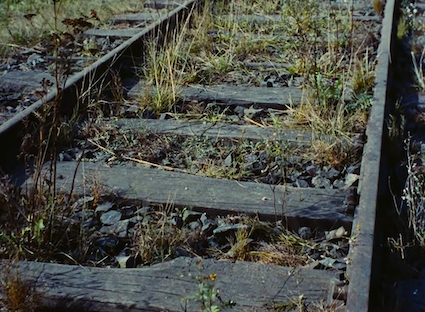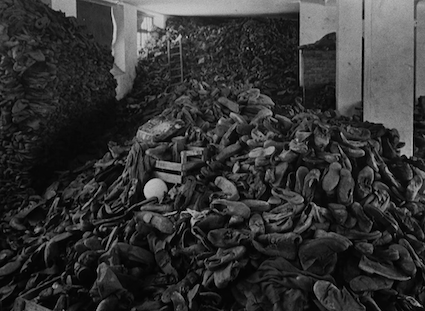sobre Noite e Nevoeiro de Resnais (1955) – texto de Joaquim Queiroz
O assunto e a sua natureza turbulenta não nos são tornados evidentes no começo. Ao invés, somos introduzidos em ambientes pacíficos com a presença dominante da Natureza sobre as ruínas do que só então vimos a reconhecer como os campos de concentração já abandonados. Apesar de reterem a sua qualidade objetiva, as imagens dos campos – as de outrora e as de Resnais – tornam-se emocionalmente significantes para o espectador que é guiado pela música de Hanns Eisler e a voz-off de Michel Bouquet. “Noite e Nevoeiro” deixa de ser tanto sobre estes acontecimentos, tal qual existiram, e passa a ser sobre como nos encontrarmos neles. É daí que surge a revolta e o horror que sentimos. Estas paisagens e imagens passam a pertencer a um plano mais profundo e pessoal. O que diz sobre cada um, individualmente, quando conseguimos encontrar um lugar para estas realidades dentro de nós? Tal como se ouve Bouquet dizer, «contamos a nós mesmos que tudo foi confinado a um local, num determinado tempo». E estas imagens, música e palavras, ficam imortilizadas no nosso íntimo.

about Nuit et Brouillard (Resnais-1955) – text by Joaquim Queiroz
The subject and its turbulent nature are not made obvious to us at first. Instead, we are introduced to peaceful surroundings with the dominant presence of nature over the ruins of what we only then come to recognize as the now-abandoned concentration camps. Although they retain their objective quality, the images of the camps – those of yesteryear and those of Resnais – become emotionally significant for the viewer who is guided by Hanns Eisler’s music and Michel Bouquet’s voice-over. “Night and Fog” is no longer so much about these events as they existed, but about how we find ourselves in them. That’s where the revolt and horror we feel come from. These landscapes and images become part of a deeper, more personal plane. What does it say about each of us individually when we manage to find a place for these realities within ourselves? As Bouquet says, “we tell ourselves that everything was confined to one place at one time”. And these images, music and words remain immortalized within us.

